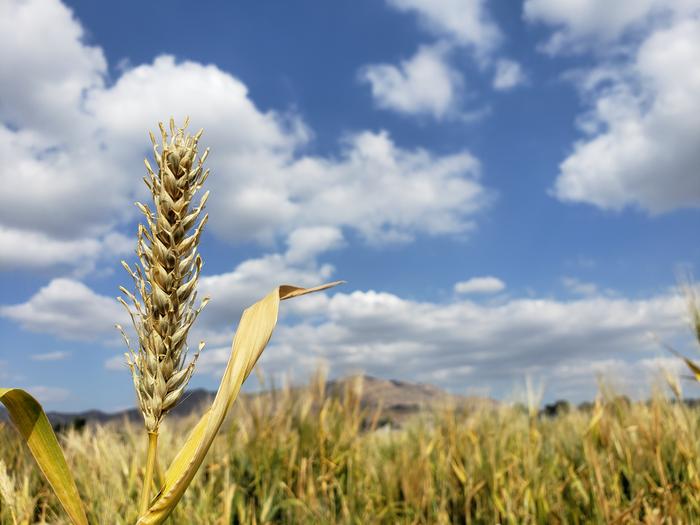In most cases, random changes to DNA allowed it to survive in each new location so scientists nearly 100 years ago set out to discover the genes that changed to predict which varieties will thrive in which places. Modern work is highlighting for media its implications in a world of future climate change but nothing happening now compares to the rain and drought booms and busts of the past.
They found that genetic diversity quickly decreases. About 30 percent of the genome is fixed and about 60 percent of progeny will be descended from one parent line by the 50th generation. Descent with modification in action, which when intentionally guided allows genetic engineering to tune into the local environment. Because barley is genetically similar to wheat, rice, and corn, these insights, coupled with modern technology like genome engineering and CRISPR, could help other crops flower at specific, more advantageous times.

Barley at UC Davis. Credit: Dan Koenig/UCR
In 1929, scientists at UC Davis didn’t have the ability to pinpoint which genes make barley successful and high yielding in a particular environment, but can tens of millions of genetic changes can be run in a single experiment and a new paper shows that some of the genes they identified help barley time its reproductive processes to the most optimal parts of the breeding season.
California is overwhelmingly desert so flowering too early or too late means the plant won’t be able to produce seeds. The new work showed how barley was optimized to finish flowering before the long dry season begins, but not so early they might be exposed to frost. In the past, that involved manual tinkering and a lot of failure but modern methods make the simulation process easier - that didn't help in the applied world of the past, where you can only grow one generation of barley a year. That is where the 1929 Barley Composite Cross II experiment, one of the world’s oldest biological experiments, came to the rescue. Using legacy methods, breeders competed thousands of genetically distinct types of barley against one another for decades and survival of the fittest meant the barley that grew best in the hot, dry California climate outcompeted its neighbors and became more frequent over time.
Because the old work is still there, it was a biological time machine to directly observe the process of adaptation and to identify genes that enabled survival.During 58 growing seasons, the field went from 15,000 genetically distinct individual plants to a single plant lineage dominating 60% of the population with no selection at all by human beings.
That is a lot in a short amount of evolutionary time but it wasn't ideal. Though yields increased as the plants adopted to California, genetic engineering using manual selection remained superior.
“Yield may be in competition with other traits, such as growing fast, or tall,” speculates UC Riverside geneticist Dan Koenig. “Growers want plants that make for friendly neighbors, but being friendly might limit adaptation to the environment.
“Barley’s ability to adapt has served as a cornerstone to the development of civilization. Understanding it is important not just to keep making alcoholic beverages, but also for our ability to develop the crops of the future and enhance their ability to adapt as the world changes.”





Comments